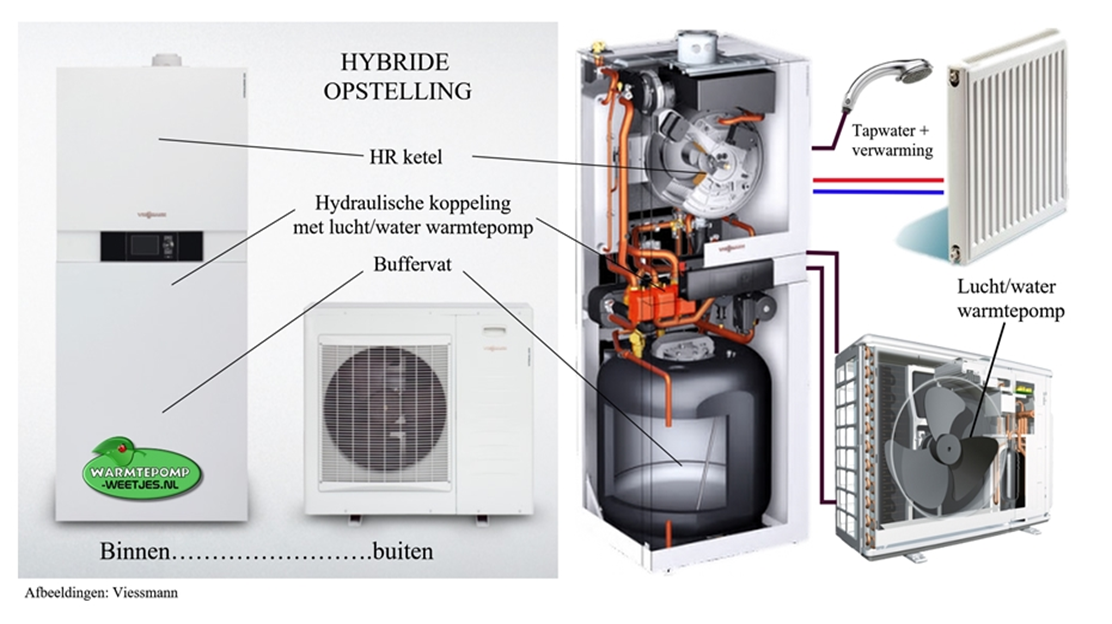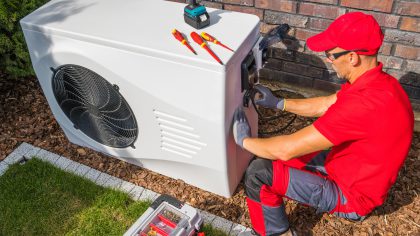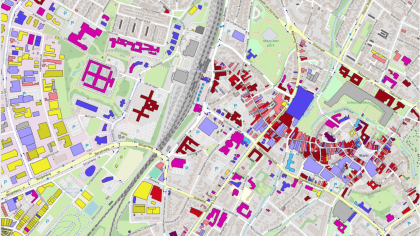The refrigerant has a low boiling point hence evaporates at low temperature. After evaporation, an electric driven compressor (indoor unit) increases the temperature, then the refrigerant condenses back to a liquid (in the condenser) to release heat to a heat exchanger. An expander makes the refrigerant ready for heat absorption (closing the cycle). Heat generated (in the condenser) is transferred to the central heating system. The transport medium for heat inside the dwelling is water, hence the name ‘air-water heat pump’.
For space heating the heat pump is used for the majority of time in a year. The gas boiler runs at peak demand moments such as on cold winter days (in which case the efficiency of the heat pump would drop substantially). This is when the heat pump does not have sufficient capacity to cover the entire heat demand. In contrast to all-electric air source heat pumps (i.e. dwellings using only a heat pump), there is no minimum insulation level required for hybrid heating systems (CE, 2018). The better the dwelling is insulated, the higher share of heat demand the heat pump can cover. Usually the gas boiler supplies all domestic hot water (DHW). It is also possible to have an air source heat pump that supplies hot water (Warmtepompplein.nl). In that case the gas boiler often will help to supply DHW at peak demand.
The efficiency of a heat pump is expressed as the coefficient of performance (COP), the ratio between heat output and electricity input, and is mainly determined by the difference between delivery temperature and source temperature. The higher the source temperature and the lower the delivery temperature the higher the COP. In winter, the temperature difference is larger, resulting in a lower COP.
A heat pump usually heats the water in the central heating system to 45 to 55ᵒC, a central heating boiler is usually set at 60 to 80ᵒC (Milieucentraal, 2018). A heat pump therefore works with a lower temperatures. The question is whether existing radiators are suitable for this. In older homes existing radiators are often suitable since the radiators have a larger capacity since the heating system is designed for a house without good insulation (Milieucentraal, 2018). In order to improve performance (and coverage) a heat pump should be used in combination with a low temperature heating system, which requires that the dwelling is sufficiently insulated. A low temperature heating system consists of under floor heating and/or low temperature radiators/wall heating (Milieucentraal, 2018).
An alternative hybrid system consists of a gas boiler and a ventilation heat pump, which recovers heat from outgoing ventilation air for heating water. Outgoing ventilation air (mostly) has a higher temperature compared to outside air hence leads to a higher average COP. A ventilation heat pump is only applicable in dwellings with a mechanical ventilation system. The ventilation heat pump has other characteristics (e.g. costs and performance) and is not elaborated further in this factsheet.
All information in the datasheets is also available in ESDL (Energy System Description Language). You can find them in the Energy Data Repository (EDR).



